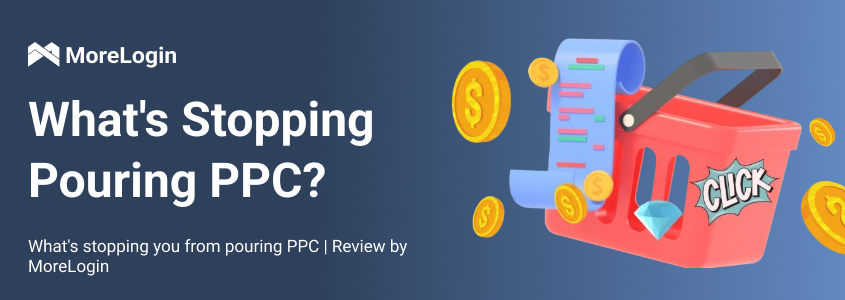
- Product

- Pricing
- Affiliate Program
- Use Cases
- Resource


Contextual advertising is one of the most powerful and promising traffic channels, especially for those working with high-margin offers. Among our partners, PPC has long held a strong position: teams consistently show six-figure turnovers, and solo arbitrageurs confidently maintain tens of thousands of dollars per month. All of this is possible thanks to the relative scalability of the source—once you understand it a bit, the path to scaling is practically open.
Now, let’s talk about myths. Not about the mechanics, but about the barriers. Specifically, the myths that still prevent beginners from entering PPC and getting started. Myths that, in reality, have no solid foundation, yet actively block access to one of the most profitable sources.
One of the first fears is fraud. People worry that the advertising budget will be drained, everything will be clicked by bots or competitors. This is partially true—fraud does exist. But it’s important to understand that Google Ads is highly interested in fair traffic delivery. Their anti-fraud systems monitor suspicious activity, and in most cases, the deducted funds are refunded. This point should definitely not be a reason to avoid even trying.
Example:
One of the webmasters launched a test campaign targeting a Tier-2 GEO. During the very first week, the system detected a spike in low-quality traffic — a large number of clicks from a single region, zero sessions, and no follow-up actions. What did the system do? It automatically blocked the suspicious IPs, recalculated the click costs, and refunded part of the budget. No manual appeals were needed — everything happened in the background. Yes, fraud is a factor, but it’s not a barrier. The key is being able to control it, and the platform genuinely helps with that.
Additionally, you can reduce risks by using anti-detect browsers like Morelogin. It allows you to create separate profiles with unique parameters: cookies, user-agent, GEO, and proxy settings. This is especially important for arbitrageurs who work with multiple accounts, run campaigns in different regions, or scale through teams. Security, session separation, and protection from bans — Morelogin provides all of that out of the box.
Next — semantic core. Many people think that building a keyword list requires a dedicated analyst or agency. But that’s a myth. You can start with something simple — put yourself in the shoes of a potential customer, imagine what they would search for, and build an initial funnel around that. No rocket science — just logic and a clear understanding of the product.
Example:
Let’s say you’re running traffic to an online casino offer with instant payouts. Think about what your target audience might be searching for. These could be queries like “casino with fast withdrawals”, “play slots for real money online”, “best casino with registration bonus”, or even more down-to-earth ones like “how to win at a casino without getting scammed.” All of these phrases already form a solid foundation for your semantic core. Add variations based on different GEOs, languages, slang — and you’ve got a starting structure for your campaign without hiring an external specialist.
Many also believe that PPC will do all the work for you. Just launch a campaign — and wait for profit. But in reality, that’s only the beginning. What comes next depends on your landing page quality, site speed, UX, creatives, and of course, optimization across devices and GEOs. PPC brings in a hot lead. But whether or not you convert them — that’s up to you. Only a systematic approach to the funnel turns traffic into revenue.
Sometimes people claim that running Google Ads hurts SEO. That’s another common misconception. In fact, SEO and PPC can work perfectly together: paid listings give instant visibility, while organic search provides long-term, stable traffic. The more interactions your site gets, the more trust it earns. Google’s algorithms treat paid and organic traffic separately — there’s nothing to worry about.
There’s also the opposite extreme: the idea that the more keywords, the better. The logic seems obvious — more keywords mean wider reach. But in reality, it’s quite the opposite. Effectiveness comes not from volume but from precision. Good keyword targeting doesn’t mean hundreds of phrases, but rather a few well-refined ones that bring the right user. Often, ROI hides in narrow focus.
Retargeting is something many people overlook. They only remember it after losing dozens of leads. Yet it’s one of the most powerful tools to bring users back. People rarely convert on the first click. But if you set up retargeting properly, your offer will start to “follow” the user until they take action. This is a proven technique, not just persistence.
Another major mistake is launching campaigns without analysis. Just dumping budget, not monitoring bids, ignoring metrics like Click2Reg or Reg2Dep — that’s a direct path to failure. PPC requires attention, manual control, and constant optimization. Without analytics, you don’t know where your clicks are coming from, what’s performing, and what’s just wasting money. Ignoring these indicators will quickly turn your campaign unprofitable.
And finally — the belief that “bigger spend = bigger profit.” A high bid doesn’t guarantee a quality lead. What matters is calculating how much you can afford to pay for a registration, a deposit, a customer — and whether it’s profitable. In PPC, the winner is not the one who spends more, but the one who calculates more accurately.
PPC is not a scary black hole where budgets vanish. It’s a full-fledged tool that, when used correctly, can become a major driver of revenue growth. The only thing holding you back is imaginary limits in your head. As soon as you stop seeing PPC as magic and start treating it as strategy, results will follow.